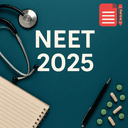Intro — why this matters
School education in India is shifting from theory-heavy textbook instruction to hands-on, project-driven tech learning — AI, robotics, AR/VR, drones and data literacy are moving into K-12 settings. This is not just “coding classes”; several new innovation centres and state curriculum pushes aim to build computational thinking, ethics awareness, and real-world problem-solving skills from Class VI onward. These initiatives change classroom design, teacher roles, assessment and — crucially — career exposure for students.
1) Concrete examples and what they offer (what’s actually being taught)
A. Institutional innovation hubs (example: IIIT / Center for Intelligent Robotics)
- Dedicated labs for Class VI–XII where students rotate through modules: AI fundamentals, robotics build-and-program, AR/VR prototyping, drones and basic avionics, data-visualisation projects and design-thinking sprints. Students work on 6–8 week mini-projects that conclude with a prototype or demo. These labs bring industry mentors/IIIT faculty as part of regular sessions.
B. State curriculum integration (example: Punjab & phased rollouts)
- States are drafting AI curricula that include: AI ethics, data literacy, block-based to Python coding progression, robotics practicals, and project showcases/hackathons. Implementation is phased (pilots in select schools, then scale over 2–3 years) with blended teacher training (online modules + in-person workshops). Textbooks and LMS content are planned in regional languages.
What students physically do in class
- Build a line-following robot, collect data with sensors, train a simple image classifier, create an AR poster, design a drone flight plan for agricultural monitoring, and present an end-to-end solution (problem → model/prototype → testing → UX tweaks).
2) Curriculum design — how schools structure learning (practical model)
Phase 1 — Foundation (Classes VI–VIII): computational thinking, block coding, simple robotics kits, responsible AI concepts (bias, fairness), hands-on STEM clubs.
Phase 2 — Applied (Classes IX–X): transition to text coding (Python), sensors & microcontrollers (Arduino/ESP32), basic ML concepts (classification/regression with small datasets), mini projects with community themes (waste, water, local agriculture).
Phase 3 — Capstone (Classes XI–XII): interdisciplinary projects, datasets, model evaluation, ethics report, prototype integration (robot + ML + UI), internship/mentorship links to local colleges.
Assessment approaches: portfolio assessment (project record), rubrics for problem definition and testing, peer review & public demo days rather than pure terminal exams.
3) Teacher readiness and training — the backbone of success
Essential teacher supports:
- Short certified courses for teachers (blended MOOCs + local workshops), micro-credentials for “AI facilitator” roles, on-call mentorship from regional university centres (like IIIT labs), and prebuilt project packs so teachers can run labs without being ML researchers.
- Common teacher concerns & solutions: lack of time (use modular 1–2-hour lab blocks), lack of equipment (shared lab schedules, low-cost microcontroller kits), fear of high-end tech (start with block-based tools and simulation).
4) Equity, access and scaling challenges (honest appraisal)
- Infrastructure gap: Many government schools still lack reliable electricity, internet or device access. Program success depends on targeted investment (state + partner grants) and mobile/offline lab kits.
- Urban–rural divide: Pilot schools tend to be urban; scaling needs mobile innovation vans, teacher exchange, and festivals/hackathons in smaller towns.
- Gender & inclusion: Without active outreach, tech spaces risk mirroring existing gender divides. Bootcamps, female-only cohorts and scholarships can help.
- Sustained funding: One-off donations don’t last; sustainable models pair school budgets, industry CSR and academic partnerships.
5) Real outcomes students and parents should expect
Short term (6–18 months): improved problem-solving skills, exposure to careers, motivated students who enjoy hands-on learning.
Medium term (2–4 years): real student projects with local impact (e.g., water-quality sensor networks), increased uptake of STEM streams in senior secondary.
Long term (5+ years): pipeline to local technical institutes, stronger employability for applied-tech jobs, and a cohort that understands AI ethics and data responsibility.
6) What good looks like — model school checklist (for principals / educators)
- Dedicated 20–30 sq. m. lab with 10–15 modular workstations.
- A 3-year curriculum map (VI–XII) with rubrics and assessment calendar.
- Teacher training plan and at least one certified “AI/Robotics” instructor.
- Partnership with a local institute (IIIT/CIR or university) for mentorship & demo days.
- Annual public demo/hackathon and a project portfolio for each student.
7) How students & parents can evaluate programs (practical questions)
- Are projects student-led and publicly demonstrated?
- What’s the teacher: student ratio for lab sessions?
- Is the program aligned to a progression (block → Python → ML) or ad-hoc workshops?
- Are there clear safety & ethics lessons included?
- Is there a commitment for continued access (after school labs, library resources)?
8) Career paths and later choices
- Short courses & internships in robotics / embedded systems, data analyst apprenticeships, diplomas in AI, B.Tech in CS/AI, roles in agri-tech/health-tech startups, and research paths via local colleges that partner with these labs.
9) Sample 8-week student project (template)
- Week 1–2: Problem definition (local water scarcity) + sensor basics.
- Week 3–4: Build sensor node + collect data.
- Week 5: Simple data visualisation + design brief.
- Week 6: Prototype decision logic (e.g., notification when moisture low).
- Week 7: Field testing + iteration.
- Week 8: Public demo + lessons learned write-up.
FAQ (short)
Q: Will this replace board exams? No — currently these are complementary. Assessment remains a combination of existing board requirements and supplemental portfolio assessments.
Q: Do students need expensive devices? No — many labs use low-cost microcontrollers and shared workstations; simulation tools can be run offline.
Q: How soon will colleges value these portfolios? Increasingly — universities and entrance panels are noticing project portfolios and research/summer internships.
Closing note
If done right, school-level AI & robotics learning is a deep enrichment: not just technical skills but empathy in design, ethics, and civic problem-solving. Pilots at technical institutes and state curriculum changes (both mentioned above) show the momentum; the next 3–5 years will show whether these become stable, equitable pipelines.

















